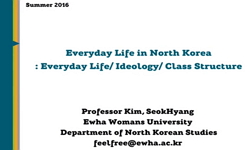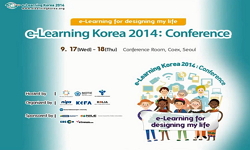Purpose Due to low incidence, epidemiologic data of Ewing sarcoma in the Asian population are scarce. We aimed to examine the incidence pattern and outcome of patients with Ewing sarcoma in the Republic of Korea. Materials and Methods Data of patients...
http://chineseinput.net/에서 pinyin(병음)방식으로 중국어를 변환할 수 있습니다.
변환된 중국어를 복사하여 사용하시면 됩니다.
- 中文 을 입력하시려면 zhongwen을 입력하시고 space를누르시면됩니다.
- 北京 을 입력하시려면 beijing을 입력하시고 space를 누르시면 됩니다.



Incidence Patterns and Outcomes of Ewing Sarcoma in South Korea (1999-2017): A Retrospective Analysis Using Korea Central Cancer Registry Data
한글로보기https://www.riss.kr/link?id=A108524510
- 저자
- 발행기관
- 학술지명
- 권호사항
-
발행연도
2022
-
작성언어
English
- 주제어
-
등재정보
KCI등재,SCIE,SCOPUS
-
자료형태
학술저널
- 발행기관 URL
-
수록면
590-596(7쪽)
- DOI식별코드
- 제공처
- 소장기관
-
0
상세조회 -
0
다운로드
부가정보
다국어 초록 (Multilingual Abstract)
Purpose Due to low incidence, epidemiologic data of Ewing sarcoma in the Asian population are scarce. We aimed to examine the incidence pattern and outcome of patients with Ewing sarcoma in the Republic of Korea.
Materials and Methods Data of patients with Ewing sarcoma diagnosed between 1999 and 2017 were obtained from the Korea Central Cancer Registry (KCCR). Incidence, clinical characteristics, and survival rates were analyzed and compared between different age groups.
Results There were 788 cases (459 males, 329 females), with a median age at diagnosis of 20 years. The age-standardized rate of Ewing sarcoma was 1.01. The number of cases and incidence rates in each age group were as follows: children, 1.6; adolescents and young adults (AYA), 0.93; adults, 0.44; and elderly, 0.53. There were more male cases in children and the AYA group (p < 0.001). Extraskeletal tumors (p < 0.001), primary sites other than extremity (p=0.007), and presence of metastasis at diagnosis (p=0.031) were more frequent in the adults and elderly group. With a median survival time of 78 months, the 5-year overall survival (OS) rate of the entire cohort was 52%. Children fared best (5-year OS, 75%), and the 5-year OS of AYA patients (51%) approximated the OS of the entire cohort. A two-fold difference of 5-year OS was observed between adults and elderly patients (42% vs. 19%). On univariate and multivariate analyses, age ≥ 15 years and presence of metastasis were adverse prognostic factors.
Conclusion This was the first epidemiologic study of Ewing sarcoma using the KCCR data. With a similar incidence to other Asian countries, the survival rate was slightly lower than that of Euro-American cases. Collaborative clinical studies are necessary to improve the outcome of Ewing sarcoma in low-incidence populations.
다국어 초록 (Multilingual Abstract)
PurposeDue to low incidence, epidemiologic data of Ewing sarcoma in the Asian population are scarce. We aimed to examine the incidence pattern and outcome of patients with Ewing sarcoma in the Republic of Korea.Materials and MethodsData of patients wi...
PurposeDue to low incidence, epidemiologic data of Ewing sarcoma in the Asian population are scarce. We aimed to examine the incidence pattern and outcome of patients with Ewing sarcoma in the Republic of Korea.Materials and MethodsData of patients with Ewing sarcoma diagnosed between 1999 and 2017 were obtained from the Korea Central Cancer Registry (KCCR). Incidence, clinical characteristics, and survival rates were analyzed and compared between different age groups. ResultsThere were 788 cases (459 males, 329 females), with a median age at diagnosis of 20 years. The age-standardized rate of Ewing sarcoma was 1.01. The number of cases and incidence rates in each age group were as follows: children, 1.6; adolescents and young adults (AYA), 0.93; adults, 0.44; and elderly, 0.53. There were more male cases in children and the AYA group (p < 0.001). Extraskeletal tumors (p < 0.001), primary sites other than extremity (p=0.007), and presence of metastasis at diagnosis (p=0.031) were more frequent in the adults and elderly group. With a median survival time of 78 months, the 5-year overall survival (OS) rate of the entire cohort was 52%. Children fared best (5-year OS, 75%), and the 5-year OS of AYA patients (51%) approximated the OS of the entire cohort. A two-fold difference of 5-year OS was observed between adults and elderly patients (42% vs. 19%). On univariate and multivariate analyses, age ≥ 15 years and presence of metastasis were adverse prognostic factors.ConclusionThis was the first epidemiologic study of Ewing sarcoma using the KCCR data. With a similar incidence to other Asian countries, the survival rate was slightly lower than that of Euro-American cases. Collaborative clinical studies are necessary to improve the outcome of Ewing sarcoma in low-incidence populations.
1 Lee JA, "Treatment outcome of Korean patients with localized Ewing sarcoma family of tumors : a single institution experience" 41 : 776-782, 2011
2 Miser JS, "Treatment of metastatic Ewing’s sarcoma or primitive neuroectodermal tumor of bone : evaluation of combination ifosfamide and etoposide : a Children’s Cancer Group and Pediatric Oncology Group study" 22 : 2873-2876, 2004
3 Zucker JM, "Therapeutic controlled trial in Ewing’s sarcoma. Report on the results of a trial by the Clinical Cooperative Group on Radio- and Chemotherapy of the E.O.R.T.C" 1019-1023, 1977
4 Esteve J, "Statistical methods in cancer research. Vol. IV. Descriptive epidemiology" Oxford University Press 1994
5 Juergens C, "Safety assessment of intensive induction with vincristine, ifosfamide, doxorubicin, and etoposide (VIDE) in the treatment of Ewing tumors in the EURO-E.W.I.N.G. 99 clinical trial" 47 : 22-29, 2006
6 Young JL, "SEER summary staging manual, 2000: coded and coding instructions"
7 Cox DR, "Regression models and life tables" 34 : 187-220, 1972
8 Cotterill SJ, "Prognostic factors in Ewing’s tumor of bone : analysis of 975 patients from the European Intergroup Cooperative Ewing’s Sarcoma Study Group" 18 : 3108-3114, 2000
9 Bacci G, "Neoadjuvant chemotherapy for Ewing’s sarcoma of bone in patients older than thirty-nine years" 39 : 111-116, 2000
10 "Korean Statistical Information Service" Statisticak Korea
1 Lee JA, "Treatment outcome of Korean patients with localized Ewing sarcoma family of tumors : a single institution experience" 41 : 776-782, 2011
2 Miser JS, "Treatment of metastatic Ewing’s sarcoma or primitive neuroectodermal tumor of bone : evaluation of combination ifosfamide and etoposide : a Children’s Cancer Group and Pediatric Oncology Group study" 22 : 2873-2876, 2004
3 Zucker JM, "Therapeutic controlled trial in Ewing’s sarcoma. Report on the results of a trial by the Clinical Cooperative Group on Radio- and Chemotherapy of the E.O.R.T.C" 1019-1023, 1977
4 Esteve J, "Statistical methods in cancer research. Vol. IV. Descriptive epidemiology" Oxford University Press 1994
5 Juergens C, "Safety assessment of intensive induction with vincristine, ifosfamide, doxorubicin, and etoposide (VIDE) in the treatment of Ewing tumors in the EURO-E.W.I.N.G. 99 clinical trial" 47 : 22-29, 2006
6 Young JL, "SEER summary staging manual, 2000: coded and coding instructions"
7 Cox DR, "Regression models and life tables" 34 : 187-220, 1972
8 Cotterill SJ, "Prognostic factors in Ewing’s tumor of bone : analysis of 975 patients from the European Intergroup Cooperative Ewing’s Sarcoma Study Group" 18 : 3108-3114, 2000
9 Bacci G, "Neoadjuvant chemotherapy for Ewing’s sarcoma of bone in patients older than thirty-nine years" 39 : 111-116, 2000
10 "Korean Statistical Information Service" Statisticak Korea
11 Hung GY, "Incidence patterns of primary bone cancer in taiwan(2003-2010) : a population-based study" 21 : 2490-2498, 2014
12 Whelan J, "Incidence and survival of malignant bone sarcomas in England 1979-2007" 131 : E508-E517, 2012
13 Perlman EJ, "Ewing’s sarcoma : routine diagnostic utilization of MIC2 analysis : a Pediatric Oncology Group/Children’s Cancer Group Intergroup Study" 25 : 304-307, 1994
14 Burchill SA, "Ewing’s sarcoma : diagnostic, prognostic, and therapeutic implications of molecular abnormalities" 56 : 96-102, 2003
15 Riggi N, "Ewing’s sarcoma" 384 : 154-164, 2021
16 Fizazi K, "Ewing’s family of tumors in adults : multivariate analysis of survival and long-term results of multimodality therapy in 182 patients" 16 : 3736-3743, 1998
17 Jawad MU, "Ewing sarcoma demonstrates racial disparities in incidence-related and sex-related differences in outcome : an analysis of 1631 cases from the SEER database, 1973-2005" 115 : 3526-3536, 2009
18 Worch J, "Ethnic and racial differences in patients with Ewing sarcoma" 116 : 983-988, 2010
19 Kojima T, "Detection of chimeric genes in Ewing’s sarcoma and its clinical applications" 25 : 991-994, 2002
20 Fukushima T, "Descriptive epidemiology and outcomes of bone sarcomas in adolescent and young adult patients in Japan" 19 : 297-, 2018
21 Keegan TH, "Comparison of cancer survival trends in the United States of adolescents and young adults with those in children and older adults" 122 : 1009-1016, 2016
22 Segi M, "Cancer mortality for selected sites in 24 countries(1950-57)"
23 Curado MP, "Cancer incidence in five continents" IARC Press 2007
24 Arvand A, "Biology of EWS/ETS fusions in Ewing’s family tumors" 20 : 5747-5754, 2001
25 Lee J, "Analysis of prognostic factors in Ewing sarcoma using a population-based cancer registry" 116 : 1964-1973, 2010
26 Anfinsen KP, "Age-period-cohort analysis of primary bone cancer incidence rates in the United States(1976-2005)" 20 : 1770-1777, 2011
27 Martin RC 2nd, "Adult soft tissue Ewing sarcoma or primitive neuroectodermal tumors : predictors of survival?" 138 : 281-285, 2003
28 Grier HE, "Addition of ifosfamide and etoposide to standard chemotherapy for Ewing’s sarcoma and primitive neuroectodermal tumor of bone" 348 : 694-701, 2003
동일학술지(권/호) 다른 논문
-
Challenges in the Use of Targeted Therapies in Non–Small Cell Lung Cancer
- 대한암학회
- Joel Rivera-Concepcion
- 2022
- KCI등재,SCIE,SCOPUS
-
Cancer Statistics in Korea: Incidence, Mortality, Survival, and Prevalence in 2019
- 대한암학회
- 강미주
- 2022
- KCI등재,SCIE,SCOPUS
-
Prediction of Cancer Incidence and Mortality in Korea, 2022
- 대한암학회
- 정규원
- 2022
- KCI등재,SCIE,SCOPUS
-
- 대한암학회
- 양민수
- 2022
- KCI등재,SCIE,SCOPUS





 KCI
KCI








